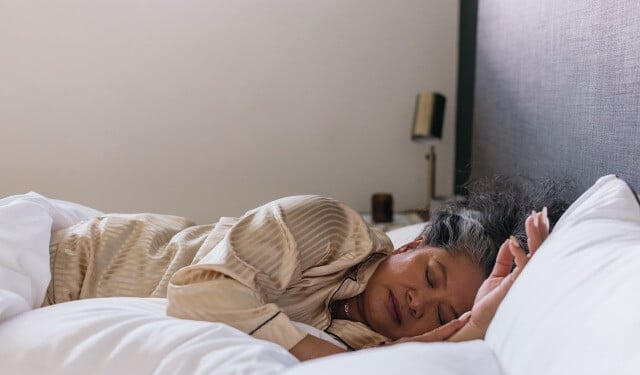Brenda is a 54-year-old woman who told me, “I am so sick and tired of being dependent on pain medication, I could scream.” She tried several times to stop taking her medication. She would get so far before the withdrawal became intolerable. One of her biggest problems is that she kept experiencing low energy levels after stopping. She needed answers to “when and how does my energy come back after opiate withdrawal?”
Pain Medication After Surgery
Brenda was first put on medication when she had various abdominal surgeries. At first, she was able to stop taking the pain medication between surgeries, even though she had bottles of pain medication left over. “The doctors didn’t think twice about prescribing pain medication, even though I really didn’t need so much.” But on the last surgery to repair an abdominal hernia, something happened, and Brenda never stopped taking the pills.
Finally, her surgeon told her she needed to get the medication from her primary care doctor. He prescribed them for about three years until he turned her over to a pain management doctor.
How Do I Stop Taking Pain Meds?
“No one really talked to me about how to stop—I really didn’t even know if I was still having pain or what…I just knew if I missed a dose of medication, I felt like a flu was coming on. I did a little research and realized I was physically dependent.”
Although Brenda no longer wanted or needed to be on her oxycodone (she was taking between 50-60mg/day), she was terrified to stop. She was nervous to bring it up to the doctor because she was fearful of being cut off. Brenda had heard far too many horror stories of people being dropped from their prescriber and getting medication ‘on the street’.
If you find yourself in the situation where your doctor is refusing to prescribe you pain medication, learn what you can do here.
“I wouldn’t have even known how to start looking for a dealer”, she laughed. “I am kind of sheltered and naïve.”
Ironically, although the doctor who prescribed her medication was not able to offer her a solution for stopping, Brenda felt like he was very judgmental of her for still taking them. She was really stuck between a rock and a hard place.
More like this: How Can I Get Off These Bloody Pain Medications?
Pain Medication Dependence
Brenda searched on the internet for “how to get off pain medication”,“how to avoid withdrawal from oxycodone”, and “signs and symptoms of oxycodone addiction”. She knew she wasn’t an addict, but she knew she was absolutely physically dependent. Finally one of her searches turned up the Coleman Institute for Addiction Medicine.
The Coleman Institute has been the leader in helping people get off addictive substances for over twenty-five years. Specifically, we help people get off pain medications such as oxycodone, Percocet, Roxicet, Oxycontin, morphine, codeine, Tramadol, Dilaudid, hydrocodone, Vicodin, methadone, and Suboxone. We help people who use street drugs such as fentanyl, heroin, and kratom. We also work with people to safely detox off alcohol and benzodiazepines.
Opioid Effects and Withdrawal Symptoms
Our brains adapt to whatever drug is put into our bodies. For every effect a drug has, the body creates a ‘counter effect’. Therefore, when an addictive drug is stopped, the response of the body (withdrawal) is the opposite of the drug effect.
Judith Grisel Ph.D, author of Never Enough, articulately describes the effects of opiates and the partnering withdrawal symptoms:
Opioid Effects |
Withdrawal Symptoms |
Brenda no longer experienced euphoria or pain relief from her medication; she would have had to raise the dose regularly because of the tolerance her body had developed. Now she simply took the medication so she wouldn’t experience withdrawal.
UNDERSTANDING ACCELERATED OPIOID DETOX
Pain Medication Detox
Besides describing how Brenda’s detox program would look (in her case, a four-day-outpatient procedure), I emphasized that if she had post-acute withdrawal symptoms, she’d likely be over those within a couple weeks.
Low energy levels and insomnia can persist for longer as the brain begins to adjust to its ‘new normal’ of no opioids and the body’s natural level of endorphins gets its sea legs again.Natural Sleeping Tips
Developing impeccable sleep hygiene habits such as:- Having a completely darkened room
- Avoiding heavy meals and alcohol two hours prior to sleeping
- Minimizing screen time at bedtime because even the low light from these gadgets can make the brain think it’s wake-up, rather than shut-down time
- Exercising earlier in the day, not too close to bedtime
Looking for more expert tips? Check out the Center for Disease Control’s website for more natural sleeping tips.
These sleeping tips will help the body regain its Circadian rhythm again, our natural, internal process that regulates the sleep-wake cycle and repeats roughly every 24 hours. We are also able to help with short-term sleeping medication if needed.
Low Energy After Opioid Withdrawal
Many people express frustration with the lack of energy that ensues following an opioid detox. Working with our counselors, support groups, and other reliable resources can help people get through this tough period. This is a time when patients are particularly vulnerable to cravings and triggers and why working with experts trained in helping people with Substance Use Disorders is so valuable.
Naltrexone Use
It is also why The Coleman Institute includes long-acting naltrexone at the completion of every accelerated opioid (and alcohol) detox program.
Suggested Read: Naltrexone: Medication-Assisted Treatment For Opioid Use Disorder
Naltrexone, a non-addictive opioid blocker, will occupy the opioid receptors and our long-acting naltrexone implants will effectively block physical cravings for about eight weeks.
Almost invariably, by the time we see our patients in a follow up appointment for their next naltrexone implant, they report their energy levels have returned close to their baseline.
Paid Medication Addiction
Unfortunately, for years the medical profession over-prescribed narcotic pain medication, thus initiating many people’s addiction problems, and in 2012 “259 million prescriptions were written for opioids, which was more than enough to give every American adult his or her own bottle of pills.” (Grisel, J. Never Enough, p.64)
When pills become too expensive or are no longer available through legitimate means, many people turn to “street drugs.”
Luckily, Brenda was not one of those folks.
Conclusion
She is an excellent candidate for an Accelerated Opioid Detox and extended-release naltrexone therapy, and I predict great success for her to resume a normal life, free from the clutches of opioid medication.
Should you or a loved one like to discuss your own situation with us or learn more about what we do and how our program works, please give us a call at 877-773-3869.
Joan Shepherd, FNP


